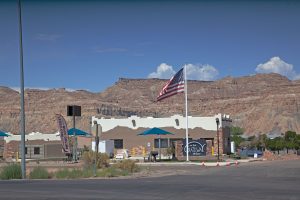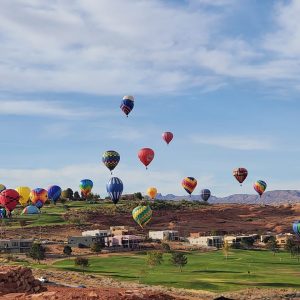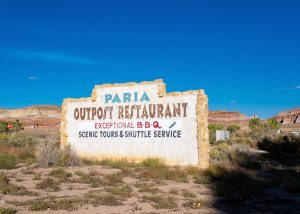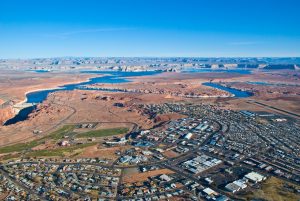There is a saying that rocks tell stories. That they do. This begins a series on paleontology in the Lake Powell area including finds in the Glen Canyon National Recreation Area as well as the Grand Staircase Escalante National Monument. Before people were here this area was the vast ancient real estate of many creatures, some of which have been remarkably well preserved.
CLICK ON PHOTOS FOR FULL SIZE
Introductions:
Heather Rankin, (me) mom to 4 children, now mostly grown, grandma, musician and Realtor
David Rankin – oldest son, currently a Park Ranger at Glen Canyon National Recreation Area and in school at the University of Utah. Discoverer “Eopolycotylus rankini” a new species of pliosaur and several other finds locally, co-discoverer of a new species of Therizinosaur, N. graffami.
Dr. David Gillette – Colbert Curator of Geology at the Museum of Northern Arizona
Dr. Alan Titus – Paleontologist for the Grand Staircase Escalante National Monument, Southern Utah
Dr. L. Barry Albright – Paleontologist, author of several books and publications, was working at MNA during digs.
Merle Graffam, a local amateur paleontologist, discoverer of N.graffami, co-discover of Eopolycotylus rankini.
The summer of 2000 I spent about 200 hours in the field with Dr. Dave Gillette and a crew from the Museum of Northern Arizona digging what turned out to be a pretty dang good specimen of a plesiosaur. Plesiosaurs were water bound marine reptiles that lived at the time of the dinosaurs, but in the oceans and seaways. Much like what we might think of as the Loch Ness Monster – this plesiosaur had a very short, thick, neck and a 4 foot long jaw. They moved through the water, probably by undulating, with their four flippers – two in the front and two in the back.
This is a story of how water bound marine reptiles ended up in the middle of the high, wind-blown deserts of Southern Utah, a 14 year old with a passion, and the growing Grand Staircase Escalante National Monument finds.
The Beginning
We moved to the Lake Powell area of Big Water in 1991 when David was just shy of 8 years old and for him it was like coming home. He had caught his first snake when he was 3, and by the time he was 7 had a small business catching and selling garter snakes to the local teenagers in Salt Lake area. Big Water, and the desert surrounding it, offered so much for David to do, he had a hard time concentrating in school as he wanted to be out hiking. By the time he was 12 we bought him one of the first personal GPS systems to take with him on his excursions. By 13 he was finding all manner of fossils around the area, lots of fish, shark teeth sets and ammonites.
Things started to get really interesting the year he was 14. I remember receiving a call that summer from someone looking for “Mr. David Rankin” I was a bit taken aback as “Mr. Rankin” was 14 at the time. Turns out David had come to the attention of Roger Farish and the Dallas Paleontological Society, a group highly interested in shark teeth. The group had been out to the local desert here several times looking for “sets” of teeth but have never found them. David ended up leading a group from the DPS to the Tropic Shale (more on that later) and although huge moonson rains hit causing flash floods, they located some of the sharks teeth sets they were interested in.
Plesiosaur Find
Later that summer David brought something home as he was terribly worried it was going to wash away in the moonsoon rains that hit us in July and August. He told me they were bone pieces and for several days he sat at the dining room table, with tubes of super glue, painstakingly putting the puzzle of bones back together. It was pretty obvious we were looking at the bones of something very large. Knowing we could not keep these at home, we started calling around to see if someone could help us identify what they were, and what to do with them.
After several calls and finding no one interested in our situation, Merle Graffam, a local neighbor, and one of David’s hiking buddies, offered to make some calls. He got in touch with Dr. David Gillette from the Museum of Northern Arizona in Flagstaff. David G. requested that David go back out and get GPS readings from where the bones were located.
It was a hot day and I drove David back out to the site, some 9 miles past Big Water on dirt roads in an area we call “The Moon”. David asked me to just drop him off as he wanted to hike some, and come back in a couple of hours to get him. When I returned back to the site, David was about 150 yards off the dirt road, in the desert, waving at me to walk out there. So in a dress and high heels I headed out to where he was waiting. Amazing – is the only word to describe what was there. Coming up from the gray, sand/rock, of the Tropic Shale was obviously another fossil site. David had taken the GPS readings for the second site as well.
Within a couple of days Dr. Gillette arrived in Big Water from the Museum of Northern Arizona, some 2.5 hours away. After examining the two sites he decided there was probably scientifically significant material at the two sites and started the long process of getting permits to dig from the National Park Service. It was an 18 month process, during which time we would drive out to the sites every few days to make sure no one had discovered them. About the only thing note worthy was the motorcycle tire tracks over both sites from folks who did not know they were driving over a 93 million year old sea going monster.
Next up – Permits in hand……. the digs begin.
Note: While I’ve only included a few photos in this post, there are hundreds to scan, and post. We made a photo journal of several of the digs which are in a book which has been on display at the John Wesley Powell Museum in Page, Az, The Grand Staircase Escalante Visitor Center in Big Water, UT and the Carl Hayden Visitor Center at Glen Canyon Dam.






This is so cool how you see the things that palentologisst do and things that they do. Thanks for the information about he dinosaur im doing my report on thanks a bunch.
Janie
Your most welcome! I am going to start working on “part 2” which was the process of digging the dino so stay tuned…..